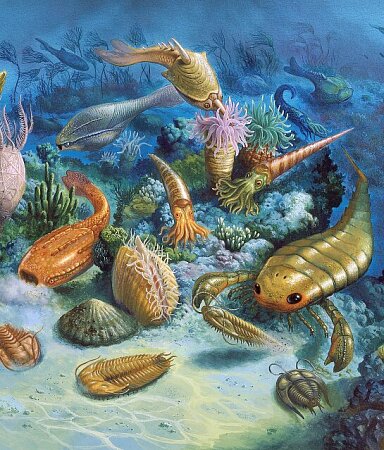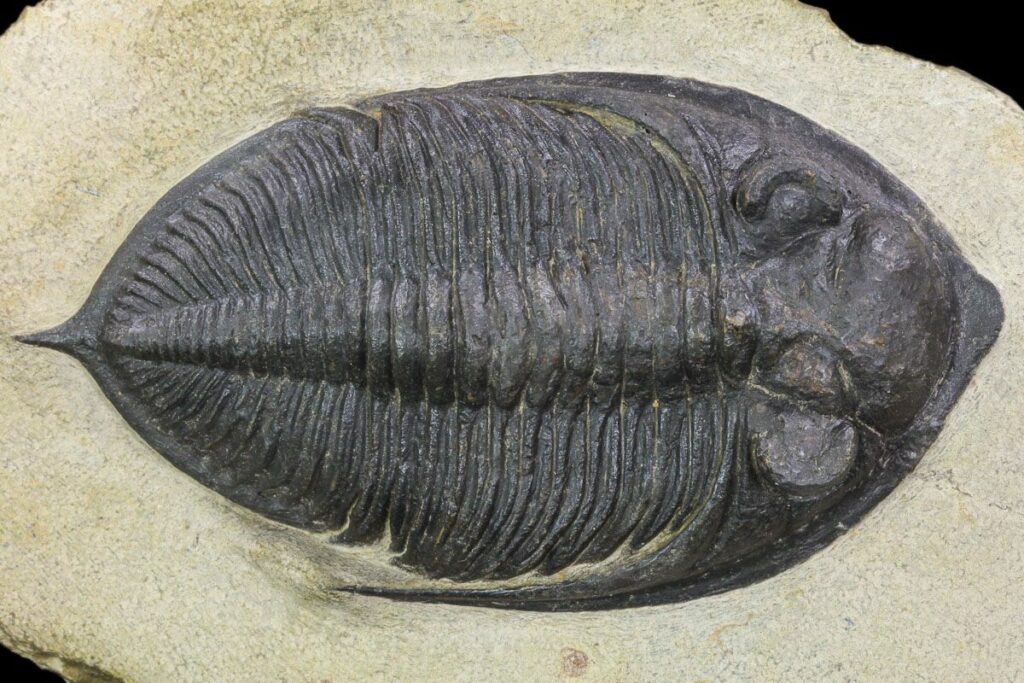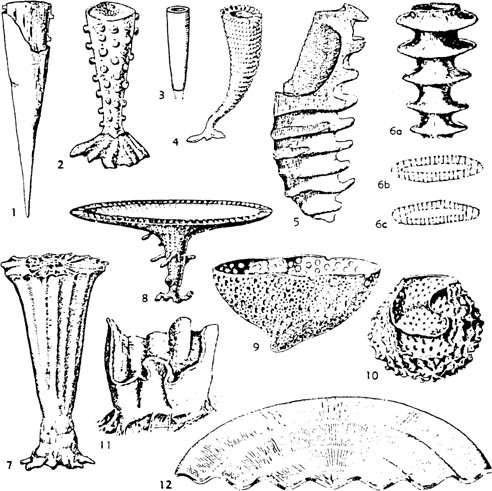Cambrian Period
Cambrian Period: A Glimpse into Earth’s Ancient Past
Table of Contents:
- Introduction
- The Cambrian Explosion: A Burst of Biodiversity
- Environmental Conditions
- Cambrian Fauna and Flora
- 4.1 Trilobites: Ancient Arthropod Pioneers
- 4.2 Anomalocaris: Apex Predator of the Cambrian Seas
- 4.3 Archaeocyathids: Earth’s First Reef-Builders
- 4.4 Kimberella: Earliest Evidence of Complex Life
- Unearthing the Fossil Record: Insights into Cambrian Ecosystems
- The Significance of the Cambrian Period in Evolutionary History
- Conclusion

Introduction:
The Cambrian Period, which spanned from approximately 541 million to 485 million years ago, was a remarkable chapter in Earth’s history. It is often referred to as the “Cambrian Explosion,” a period marked by an unprecedented burst of biodiversity and the emergence of complex multicellular life forms. In this article, we will delve into the wonders of the Cambrian Period, exploring its significance, the unique creatures that inhabited its ancient seas, and the environmental factors that shaped this transformative era.
The Cambrian Explosion: A Burst of Biodiversity:
The Cambrian Explosion remains one of the most fascinating evolutionary events. Over a relatively short period, a diverse array of complex life forms emerged, paving the way for the evolution of the animal kingdom as we know it today. The sudden appearance of diverse body plans and ecological niches has captured the imagination of scientists for decades.
Environmental conditions:
Diversification of Life:
The Cambrian Explosion witnessed the appearance of numerous novel body plans and life forms. This diversification marked a pivotal moment in the history of life, with iconic species such as trilobites, arthropods, mollusks, and echinoderms making their debut.
Evolution of Hard Parts:
One of the most significant developments during the Cambrian Period was the evolution of hard mineralized structures. This innovation provided organisms with newfound protection and support, enabling them to explore new ecological niches.
Marine Dominance:
The majority of life during the Cambrian was aquatic, with marine environments being the epicenter of diversity. The shallow seas were teeming with a variety of organisms, showcasing intricate predator-prey relationships and co-evolutionary dynamics.
Burial and Fossilization:
The sediments of the Cambrian seas preserved the remains of ancient organisms, giving scientists a remarkable window into the past. Fossil records from this period provide invaluable insights into the early stages of animal evolution.
Cambrian Fauna and Flora:
The Cambrian seas were teeming with a variety of fascinating life forms. Some of the most notable include:
4.1 Trilobites:
Ancient Arthropod Pioneers:
Trilobites, an extinct group of arthropods, were one of the dominant life forms during the Cambrian Period. With their sophisticated exoskeletons and intricate body segmentation, trilobites are considered pioneers of arthropod evolution.

4.2 Anomalocaris:
Apex Predator of the Cambrian Seas:
Anomalocaris, a fearsome predator, roamed the Cambrian oceans. With its large, segmented body and formidable appendages, it was likely the top predator of its time, preying on smaller organisms with its unique feeding mechanism.

4.3 Archaeocyathids:
Earth’s First Reef-Builders:
Archaeocyathids were sessile, reef-building organisms that created some of the earliest known reefs. Their fossils provide valuable insights into Cambrian reef ecosystems and the interactions between different species.

4.4 Kimberella:
Earliest Evidence of Complex Life:
Kimberella is a prime example of the earliest evidence of complex, bilaterally symmetrical organisms. This soft-bodied creature moved using a muscular foot and left distinctive fossil imprints, shedding light on the behaviors of ancient organisms.

Unearthing the Fossil Record: Insights into Cambrian Ecosystems:
The exceptional preservation of Cambrian fossils in places like the Burgess Shale has allowed scientists to reconstruct intricate details of ancient ecosystems. These fossils provide a glimpse into the interactions between various species, their feeding habits, and the dynamics of Cambrian marine communities.
The Significance of the Cambrian Period in Evolutionary History:
The Cambrian Period holds profound significance for several reasons:
Origin of Body Plans:
The explosion of diverse body plans during this period laid the foundation for the subsequent evolution of complex life forms. The myriad anatomical structures that emerged set the stage for the development of more advanced creatures in later periods.
Ecological Innovations:
The Cambrian creatures pioneered various ecological roles and strategies, shaping the structure of ecosystems that continue to influence modern biodiversity.
Fossil Record Insights:
Fossils from the Cambrian Period provide a crucial window into the earliest stages of animal life on Earth. They allow scientists to trace the origins and evolutionary pathways of modern animal groups.
Evolutionary Enigma:
While the Cambrian explosion marks a time of rapid diversification, the underlying triggers for this event are still debated among scientists. Factors such as increased oxygen levels, the emergence of predation, and genetic innovations are all proposed explanations.
Conclusion:
The Cambrian Period stands as a testament to the dynamic and ever-changing nature of life on Earth. The explosive burst of biodiversity during this time transformed our planet’s ecosystems and set in motion the evolutionary journey that has led to the incredible diversity of life we see today. Studying the Cambrian Period not only provides insights into our distant past but also deepens our understanding of the ongoing processes that shape life on Earth.